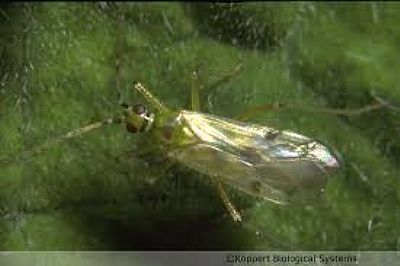NESIBUG / Nesidiocoris tenuis
Predatory bug
Target
Use Nesibug for biological pest control of:
-
All stages of Trialeurodes vaporariorum and Bemisia tabaci,
-
Tetranychus urticae
-
Thrips
-
Tuta absoluta and lepidoptera eggs in general and to a lesser extent
-
aphid larvae and
-
lyryomizes.
Packing
-
100 ml bottle, containing 500 nymphs mixed with wood chips and buckwheat
Dosage NESIBUG
|
|
Rate (ind./m2)
|
m2/ unit
|
Frequency
|
Interval (days)
|
Remarks
|
|
Preventive
|
0,25
|
2000
|
2x
|
14
|
|
|
Light curative
|
0,5
|
1000
|
2x
|
14
|
|
|
Heavy curative
|
5
|
100
|
2x
|
14
|
Introduce in
infested areas only
|
The information given below is merely indicative. Tailored advice can be provided if information is available on the local factors that need to be taken into account, such as the crop, the climate conditions and the level of infestation. For the correct approach, please consult a specialist of our company.
How does Nesibug work
Adult predators and nymphs are actively searching for their food by sucking its contents. Of the eggs, larvae or larvae of the flock that have been sucked out by the predator, only their skin remains, usually in their original form, with a thin hole from which the predators sucked them out. Nesidiocoris tenuis grows very quickly in powdery mildew and Tuta absoluta colonies. Adults can also live for a while by squeezing juices from the plant.
Application Nesibug
-
Apply the material on the leaves of cultivated plants or apply it in boxes (DIBOX) to small plants.
-
Release the maximum of about 25 predatory insects / hearth in groups.
-
Distribute the bottle to a minimum of 20 release points for preventive or low infestation.
-
Apply the material in thin layers (max. 2 cm) to allow easy movement of the predators.
-
In case of small or no infestation of the enemy on the crop: the predators feed on ENTOFOOD every 2 weeks (4 g / acre max. 3 - 4 times).
-
The use of Nesidiocoris tenuis in gerbera is not recommended because the predator can be the cause of damage to the flowers.
-
Fruit problems may occur in cherry tomatoes or small tomato type, if there is a large number of Nesidiocoris tenuis.
Best working conditions Nesibug
The optimum temperatures for Nesibug are above 20 ° C, the lower temperatures significantly slow down the growth of Nesidiocoris tenuis.
Handling
Biological beneficials have a very short life expectancy and therefore need to be introduced into the crop as soon as possible after receipt. Failure to do so can have a negative impact on their quality. In case you do need to store Nesibug, please follow the instructions below.
Storage
-
After receipt: 1-2 days
-
Temperature: 8-10°C
-
In the dark (bottle horizontally)
Pesticides can have (in)direct effects on beneficials. Check here



 HellasSITES
HellasSITES